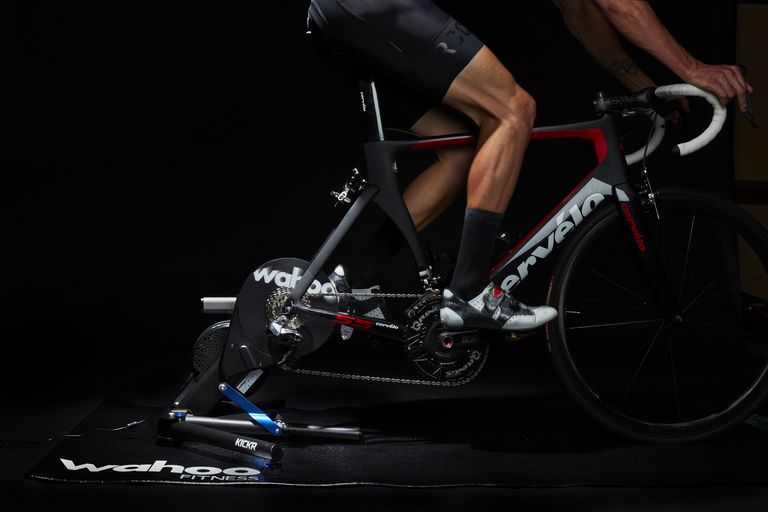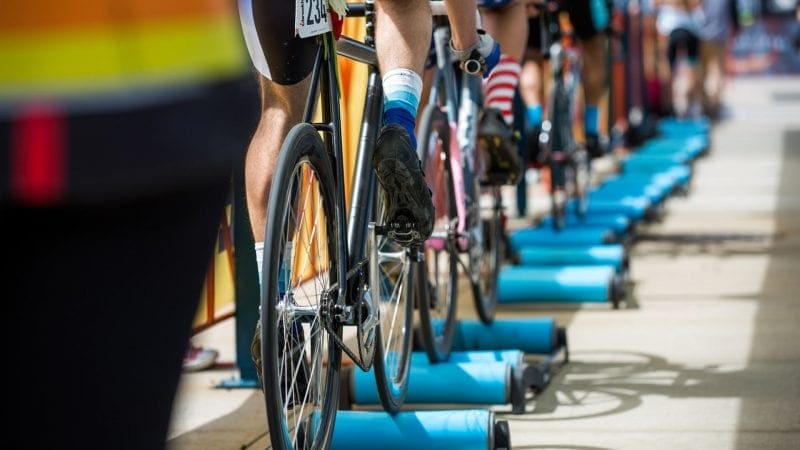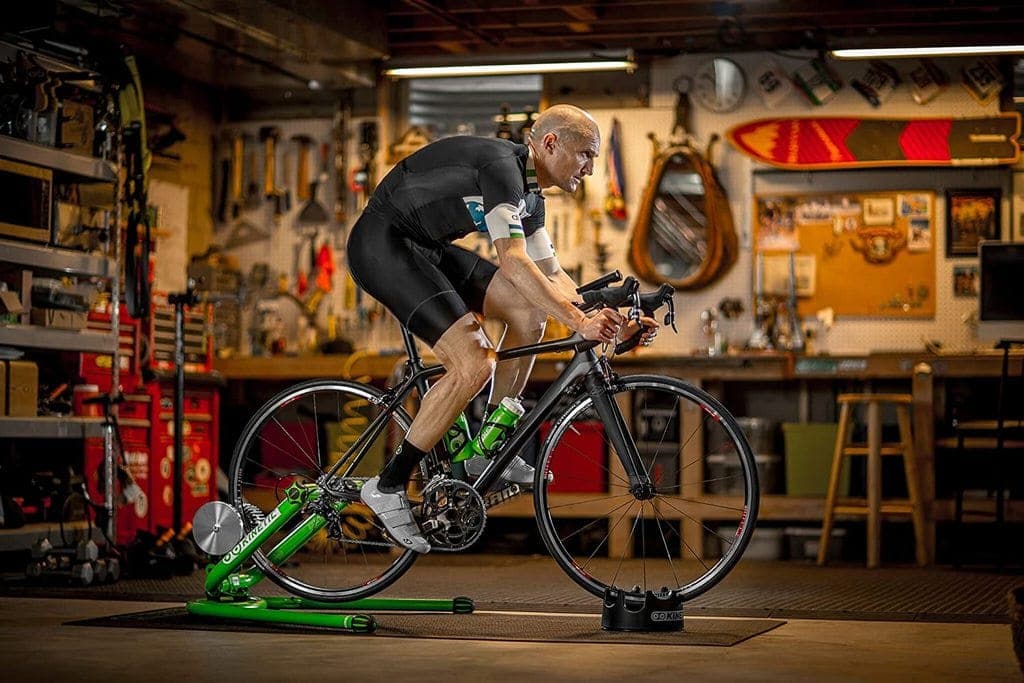6 Things to Do After Every Indoor Bike Sessions
Riding your bike on a trainer during colder months is a great way to stay in shape without dealing with freezing cold temperatures and potentially dangerous snow on the roads.
But if you’re not cautious, indoor riding can pose a couple of threats to your bike especially sweat corrosion.
No doubt about it, an indoor ride is going to result in more sweat because it’s warmer and there’s no wind to wick away that perspiration. What you may not realize, though, is that sweat is highly corrosive and can cause serious damage to your bike.
Use these tips and tricks to prevent a worst-case scenario from happening.
On This Page
Use A Sweat Cover
Because sweat is corrosive and harmful to your bike over time, it’s a good idea to invest in a sweat cover that will protect the headset and top tube.
These super absorbing covers are relatively cheap, costing anywhere between $10 and $25 on average. They’re easy to install and can last a long time if you follow care instructions, like handwashing it as opposed to machine washing it.
More premium sweat covers, like the Tacx Sweat Cover, includes additional features, like a smartphone holder. The cover will protect sweat from hitting your bike and give you an easy place to watch something on your phone without worrying about sweat getting on that too. This is helpful for those who use their phone to track stats and biometrics.
When shopping for a sweat cover, you want to make sure it’s :
- Absorbent. Cheaper models may be made of a material that catches sweat, but doesn’t fully absorb it. This can result in you removing it and sweat dripping onto the bike. Look for one that’s advertised as being absorbent.
- Easy to install. Most attach via velcro, which is a solid option, but can potentially give out after years of use.
All major cycling online shops, in addition to major sites, like Amazon, carry sweat covers.
Put A Towel over the Handlebars and Hoods
Obviously your head sweats a lot, which is why we recommend draping a towel over your handlebars and hoods.
But did you know your hands actually sweat more than your head?
Cycling gloves can help prevent sweat corrosion from making its way into your handlebars, but a towel over the handlebars can guarantee it.
While any old towel should do the trick, there are many accessories these days to enhance the indoor riding experience. Some accessory manufacturers have created specific towels for indoor trainers that protect against sweat corrosion.
Spintowel, for example, is a fitted, absorbent towel that attaches to the handlebars and can be easily machine washed. Owners of stationary bikes, like a Peloton, have found these covers to be the perfect option for protecting their expensive bikes.
If you’re using an old towel from your house, bigger bath towels work the best because you can fold them and use the weight to stay on the handlebars as your ride. Smaller hand towels could potentially fall off during your ride.
Place A Floor Mat Beneath the Bike
Having exercise equipment at home is great because you can roll out of bed, hop on your bike and get to work.
But there’s a reason why gyms have special floors designed to sustain the high-intensity movements that occur during an exercise routine. That’s why it’s critically important to at least put down a floor mat underneath your bike.
For starters, you need to protect your floor’s surface, no matter if it’s carpet, or wood, or tile.
- Carpet. As you can guess, if you simply install your indoor trainer on the carpet, expect to see a nice indent mark from the apparatus once you remove it. If you have older carpet and padding, there’s a good chance that indent sticks around for a while.
- Wood/tile. Depending on the intensity of your workout, you can expect your trainer to shift on the ground. A floor mat can solve that.
Floor mats not only protect your floors but also help cut down on noise as a natural dampener which, depending on your home, could be a relief to other family members!
Give A Thorough Wipe Post Ride
Serious issues, like sweat corrosion, can be remediated simply by performing a thorough wipe down of your bike at the end of your ride.
This is more than just a quick wipe. You need to make sure you get into all the nooks and crannies of your bike to ensure your sweat (or sports drink) is cleaned.
I recommend using antiseptic wipes that kill nearly 100% of all bacteria instead of just a general wipe. This is important as bacteria that get trapped in your bike can turn into more serious fungal infections.
Don’t stop with your bike, though.
You’ll also want to wipe down your trainer mat and wash any handlebar towels you used. If you supplement your workout with free weights, also wipe those down.
Regularly Check for Worn Rear Tires
This is applicable for those trainers with wheels on. If you’re using a direct drive trainer like the Wahoo Kickr or Tacx Neo, then it wouldn’t not applicable.
When using an indoor trainer, a majority of the pressure is on the back tire, which is pushed against the trainer’s drum. Once things are locked in, your back tire is pressing in on one little point, causing that tire to wear down significantly quicker than the front tire.
It’s important to regularly check these rear tires to prevent getting a flat.
More experienced riders realize that a worn rear tire is simply a fact of life when it comes to riding on an indoor trainer during the colder months and purchase a new set of tires for those sessions, before swapping them out for their outdoor riding season.
There are a few things you can do to slow down your rear tire from wearing down:
- Keep things clean. Make sure there isn’t any dust or debris in the rollers on your indoor trainer, which can cause additional friction with your rear wheel.
- Inflate your tires. We’ll touch on this a little more, but it’s critical that your tires are fully inflated to cut down on additional friction.
Keep the Rear Tires Inflated
Low air pressure will not only destroy your rear tire but will also impact the feel of your ride. So, inflate the tire to what you would ride on the road.
This is something you need to keep up on, too. If you ride consistently, your bike’s tires will lose about 10 PSI per week.
The biggest issue with a lower-inflated tired is slipping. If a tire is fully inflated, the chances of skipping or slipping drop significantly. You’ll also get the tires to last slightly longer.
Author Recommended Reads



